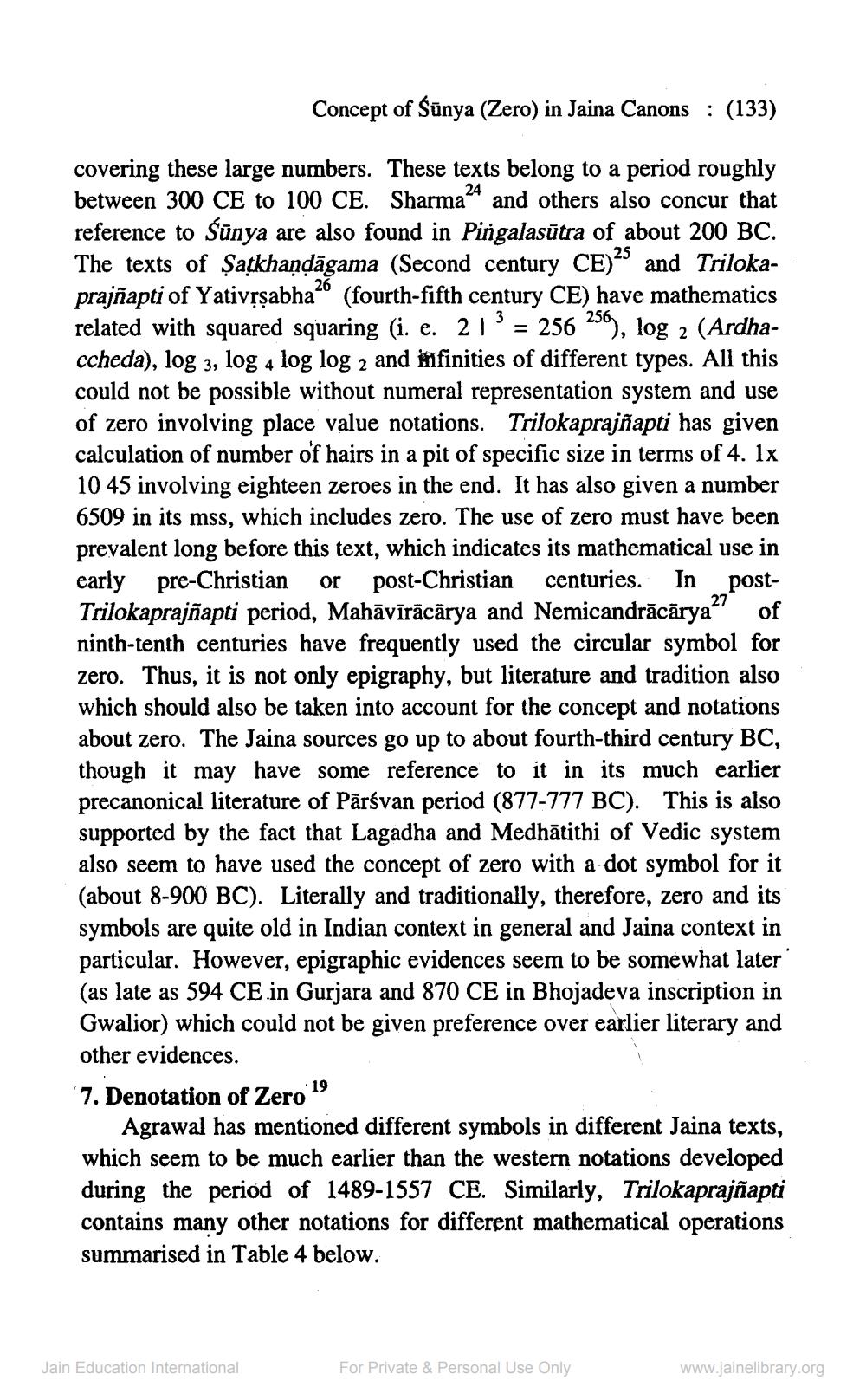________________
Concept of Śūnya (Zero) in Jaina Canons : (133)
covering these large numbers. These texts belong to a period roughly between 300 CE to 100 CE. Sharma24 and others also concur that reference to sūnya are also found in Pingalasūtra of about 200 BC. The texts of Satkhaņdāgama (Second century CE)” and Trilokaprajñapti of Yativrşabhao (fourth-fifth century CE) have mathematics related with squared squaring (i. e. 21° = 256 256), log 2 (Ardhaccheda), log 3, log 4 log log 2 and infinities of different types. All this could not be possible without numeral representation system and use of zero involving place value notations. Trilokaprajñapti has given calculation of number of hairs in a pit of specific size in terms of 4. lx 10 45 involving eighteen zeroes in the end. It has also given a number 6509 in its mss, which includes zero. The use of zero must have been prevalent long before this text, which indicates its mathematical use in early pre-Christian or post-Christian centuries. In postTrilokaprajñapti period, Mahāvīrācārya and Nemicandrācārya of ninth-tenth centuries have frequently used the circular symbol for zero. Thus, it is not only epigraphy, but literature and tradition also which should also be taken into account for the concept and notations about zero. The Jaina sources go up to about fourth-third century BC, though it may have some reference to it in its much earlier precanonical literature of Pārsvan period (877-777 BC). This is also supported by the fact that Lagadha and Medhātithi of Vedic system also seem to have used the concept of zero with a dot symbol for it (about 8-900 BC). Literally and traditionally, therefore, zero and its symbols are quite old in Indian context in general and Jaina context in particular. However, epigraphic evidences seem to be somewhat later (as late as 594 CE in Gurjara and 870 CE in Bhojadeva inscription in Gwalior) which could not be given preference over earlier literary and other evidences. 7. Denotation of Zero 19
Agrawal has mentioned different symbols in different Jaina texts, which seem to be much earlier than the western notations developed during the period of 1489-1557 CE. Similarly, Trilokaprajñapti contains many other notations for different mathematical operations summarised in Table 4 below.
Jain Education International
For Private & Personal Use Only
www.jainelibrary.org




